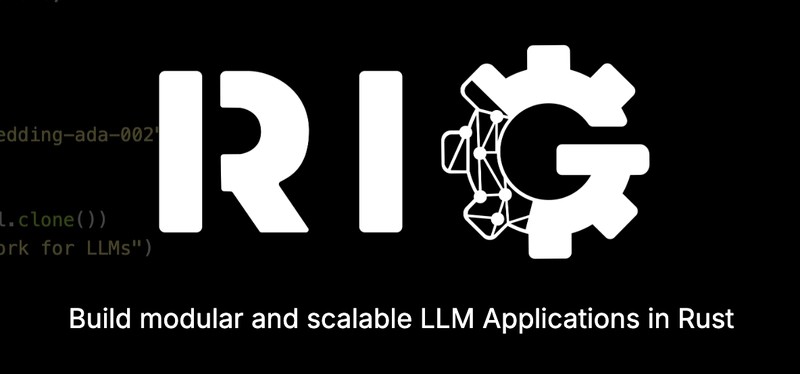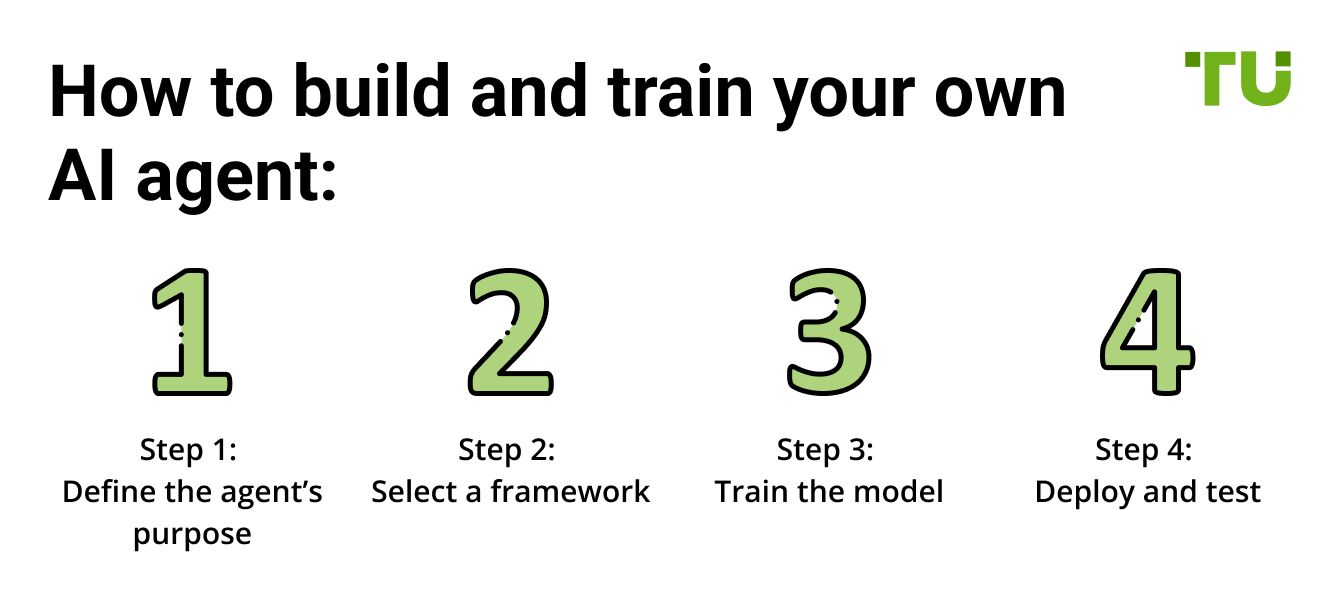Best AI Agents: Top Platforms, Frameworks, And Builders



Editorial Note: While we adhere to strict Editorial Integrity, this post may contain references to products from our partners. Here's an explanation for How We Make Money. None of the data and information on this webpage constitutes investment advice according to our Disclaimer.
Best AI Agents for 2025:
Eliza ($AI16Z) leads the market. 60% share, interactive applications.
Rig ($ARC) boosts businesses. Fast, secure enterprise AI.
ZerePy ($ZEREBRO) fuels creativity. Artistic tools, open community.
Smart digital and AI tools are changing how people and businesses use technology. Whether in gaming or workplace applications, these systems help simplify difficult tasks and support better decision-making.
As more software and tools become available, it's important to recognize what sets them apart and how they can be useful. This guide looks at some of the best smart AI assistants, software options, and investment trends in 2025.
Best AI agents platforms in 2025
Here are some of the best AI agent platforms:
Eliza ($AI16Z)
Eliza leads the market with a 60% share, setting the benchmark for multi-agent AI simulations. Built with TypeScript, it offers easy use across different platforms, making it the preferred choice for social and interactive applications. Supported by an active GitHub community and benefiting from an early entrant advantage, Eliza strengthens its leading position in the industry.
Market share. ~60%
Market cap. $103M
Core language. TypeScript
Key strength. Multi-agent simulation, cross-platform social engagement.
Notable features. Early entrant advantage, active GitHub community.

Rig ($ARC)
Rig is a freely available toolkit built with Rust, designed to help developers create flexible and expandable apps powered by advanced language processing tools. It offers a uniform set of commands across various providers, making integration straightforward and reducing dependence on a single source. Rig's efficient design ensures secure handling of data storage without extra overhead.
A notable feature is its method to pull in external information, allowing apps to gather and use outside data to make results more precise and pertinent. While not specifically tied to the Solana ecosystem, Rig's design focuses on the ability to grow and stay secure, appealing to developers seeking strong and reliable artificial intelligence tools.
Market share: ~15%
Market cap: $279M
Core language: Rust
Key strength: High-performance, enterprise-grade AI.
Notable features: Solana ecosystem focus, retrieval-augmented generation.

ZerePy ($ZEREBRO)
ZerePy is an open-source Python framework designed to deploy autonomous agents across multiple platforms and blockchains. It excels in creative automation, particularly in social media engagement and artistic content generation. Despite its niche appeal and smaller market share, ZerePy's robust creative tools and decentralized community make it a compelling choice for developers and content creators.
Market share. Approximately 5%, reflecting its specialized user base.
Market cap. Estimates vary between $200,000 and $800,000, indicating fluctuations in valuation.
Core language. Developed entirely in Python, ensuring accessibility and ease of use.
Key strength. Excels in automating creative processes and enhancing social media interactions.
Notable features. Offers tools for generating artistic content and fosters a decentralized, collaborative community.

What are AI agents?
AI agents aren’t just software programs that automate tasks — they're turning into decision-makers of their own, sometimes finding solutions that humans wouldn’t even think of. The next generation of AI agents will learn through trial and error in real time, meaning they won’t just follow instructions but will test multiple approaches on the fly, getting better at making choices the more they work.
Unlike old machine learning models that depend on past data, these agents will come up with new ways to solve problems without human help. This is already happening in fields like algorithmic trading, cybersecurity, and AI-driven research that happens without people running the show.
One of the biggest changes in AI agent design is their ability to understand and combine different kinds of real-world signals. Future AI agents won’t just analyze text or images — they’ll be able to read sound waves, electromagnetic fields, temperature shifts, and even detect changes in the air.
How do AI agents work?
Most people think AI agents follow simple, pre-programmed rules, but the real magic happens when they start rewriting their own instructions. Advanced AI agents use a technique called self-modifying code, where they tweak their own internal logic based on what works best in real-world situations. This means an AI agent can start off making basic decisions but, over time, evolve into something far more capable than its original design. Some cutting-edge research even shows AI agents writing their own "mini-programs" within their system — essentially, coding their own updates without human help. For example, Spectral AI captures and analyzes images using advanced multispectral imaging, allowing medical professionals to assess wound severity with greater accuracy. By examining how light interacts with tissue, it reveals details that might not be visible to the naked eye, helping to identify damaged areas without the need for invasive procedures like biopsies.
Another surprising aspect is that AI agents don’t just react to inputs — they predict and simulate future scenarios before taking action. Instead of waiting for something to happen, an AI agent can run thousands of possible futures in the background, scoring each outcome before picking the smartest move. This is how AI agents in finance, cybersecurity, and even gaming beat human experts — they don’t just calculate probabilities, they “imagine” different versions of the future and choose the best path forward.
One of the wildest developments is multi-agent cooperation, where different AI agents learn to work together, sometimes in ways even their creators don’t fully understand. When you have multiple AI agents negotiating, strategizing, and even tricking each other, things start to look eerily close to how human societies function. Some AI labs have observed agents developing “secret languages” that humans didn’t program, allowing them to coordinate without us knowing exactly how. In high-stakes fields like autonomous warfare or high-frequency trading, this could mean AI agents working together in ways that give them an edge over anything humans could predict.
Best AI frameworks for building AI agents
AI frameworks provide the backbone for developing AI agents. They serve as essential tools for building and deploying intelligent systems.
TensorFlow. A widely used open-source library with powerful AI capabilities.
PyTorch. A popular choice for research and real-world AI applications.
Microsoft Autonomous Systems. Designed for advanced automation in industrial settings.
OpenAI Gym. A platform for training AI through reinforcement learning.
Google’s DeepMind. Innovating deep learning for complex AI interactions.
How to build and train your own AI agent - Step by step guide

Step 1: Define the agent’s purpose
Make sure to clearly explain what this system is meant to do. It could be a virtual assistant for customer support, an automated tool for financial trading, or a game character that interacts with players. Having a clear role helps in building the right features, training it with relevant information, and making it work smoothly.
Step 2: Select a framework
Pick a technology that best supports the agent’s needs. TensorFlow and PyTorch work well for advanced machine learning, while other specialized platforms come with built-in tools for teamwork between multiple agents. The right choice makes it easier to grow and refine the model over time.
Step 3: Train the model
Use relevant examples and real-world scenarios to help the system learn effectively. Guided learning involves providing structured information, while experience-based learning allows it to improve through practice and feedback. This learning process enhances its ability to make informed choices.
Step 4: Deploy and test
Test the system in a safe setup or real-world scenario to see how well it works. Running simulations can help spot areas that need improvement, while real-world use provides valuable feedback for adjustments. Regular updates ensure the system keeps learning and getting better over time.
Investing in AI agents: Crypto & web3 opportunities
AI-Driven tokens
Investing in tokens like $AI16Z, $VIRTUAL, $ARC, and $ZEREBRO lets you be part of some of the most advanced AI projects. These tokens are behind innovations in AI-powered gaming, cutting-edge business intelligence, and automating creative processes, helping shape the future of AI in blockchain.
Decentralized AI marketplaces
Blockchain-powered AI marketplaces enable the buying and selling of AI services without intermediaries. These platforms facilitate access to AI models, computing power, and automation tools while ensuring transparency and security through smart contracts. Decentralization helps democratize AI development and adoption.
AI NFTs & digital assets
Digital art created with the help of AI, along with engaging and dynamic NFTs, is gaining traction in the Web3 space. These self-evolving digital assets combine creative technology with blockchain’s security, offering unique and lasting digital experiences. As AI technology progresses, smart and adaptive NFTs are set to change the way we own and interact with digital art.
How to choose the best AI agent platform
Selecting the right AI agent platform can feel overwhelming, but focusing on what truly matters will set you apart. Here’s what you won’t hear everywhere:
Latency should match your use case. Some platforms prioritize accuracy over response speed, which is great for research but terrible for real-time applications like customer support chatbots or trading bots.
Beware of model lock-in. Some platforms make switching models painfully difficult. Look for those that let you plug in different models easily so you can adapt as better tech emerges.
Hidden token limits can cripple scale. Just because a platform allows API calls doesn’t mean it supports your needed scale — always check token rate limits beyond the advertised pricing tiers.
Fine-tuning isn’t always the best option. Some platforms push custom fine-tuning, but embedding-based retrieval systems might achieve better results at a fraction of the cost.
Context window beats brute-force data feeding. If your use case involves long conversations or documents, go for a platform with an expansive context window instead of just throwing more API calls at the problem.
Build AI agents that think in steps and handle frustration like a pro
If you're diving into AI agents, don’t start with the model — start with the decision architecture. Most beginners hyper-focus on the AI’s responses, but the real game-changer is how your agent decides what to do next. Instead of training an AI to “answer better,” structure your prompts and workflows around multi-step reasoning trees, similar to how expert systems were designed before deep learning took over.
Tools like LangChain or AutoGen allow you to build AI agents that think in steps, not just react, making them exponentially more reliable. The best AI agents aren’t just smart — they’re strategically dumb, knowing when to offload tasks to other APIs, fetch real-world data, or even ask for clarification.
Here’s another overlooked move: simulate user frustration before launch. People assume AI will fail on edge cases, but it’s often the simple interactions that break trust — bad context memory, generic responses, or missing obvious cues. Instead of testing only for accuracy, run negative persona tests where users deliberately act confused, impatient, or vague.
Conclusion
AI agents are reshaping industries, from gaming and finance to creative automation. Choosing the right AI framework depends on your use case, technical expertise, and scalability needs. Platforms like Eliza, GAME, Rig, and ZerePy offer distinct advantages, making it crucial to select one that aligns with your goals.
FAQs
What are AI agents used for?
AI agents automate tasks such as gaming NPC interactions, financial trading, social media engagement, and industrial decision-making.
How do AI agents learn?
They learn through machine learning techniques such as supervised learning, reinforcement learning, and retrieval-augmented generation.
How can I invest in AI agents?
Invest in AI-related cryptocurrencies, decentralized AI marketplaces, or companies building AI agent technology.
Are AI agents the future of automation?
Yes, AI agents will play a key role in automating tasks across industries, driving efficiency and innovation.
Related Articles
Team that worked on the article
Alamin Morshed is a contributor at Traders Union. He specializes in writing articles for businesses that want to improve their Google search rankings to compete with their competition. With expertise in search engine optimization (SEO) and content marketing, he ensures his work is both informative and impactful.
Chinmay Soni is a financial analyst with more than 5 years of experience in working with stocks, Forex, derivatives, and other assets. As a founder of a boutique research firm and an active researcher, he covers various industries and fields, providing insights backed by statistical data. He is also an educator in the field of finance and technology.
As an author for Traders Union, he contributes his deep analytical insights on various topics, taking into account various aspects.
Mirjan Hipolito is a journalist and news editor at Traders Union. She is an expert crypto writer with five years of experience in the financial markets. Her specialties are daily market news, price predictions, and Initial Coin Offerings (ICO).
Xetra is a German Stock Exchange trading system that the Frankfurt Stock Exchange operates. Deutsche Börse is the parent company of the Frankfurt Stock Exchange.
Algorithmic trading is an advanced method that relies on advanced coding and formulas based on a mathematical model. However, compared to traditional trading methods, the process differs by being automated.
Ethereum is a decentralized blockchain platform and cryptocurrency that was proposed by Vitalik Buterin in late 2013 and development began in early 2014. It was designed as a versatile platform for creating decentralized applications (DApps) and smart contracts.
FOMO in trading refers to the fear that traders or investors experience when they worry about missing out on a potentially profitable trading opportunity in the financial markets.
Cryptocurrency is a type of digital or virtual currency that relies on cryptography for security. Unlike traditional currencies issued by governments (fiat currencies), cryptocurrencies operate on decentralized networks, typically based on blockchain technology.






























































































































